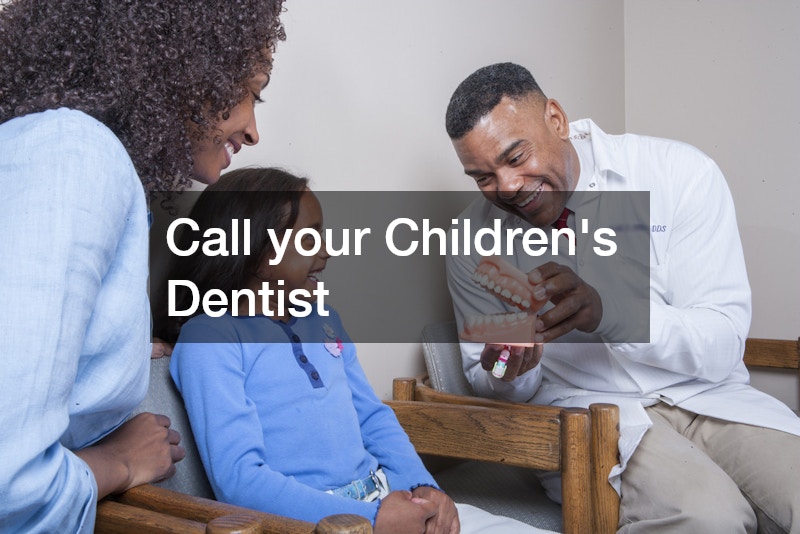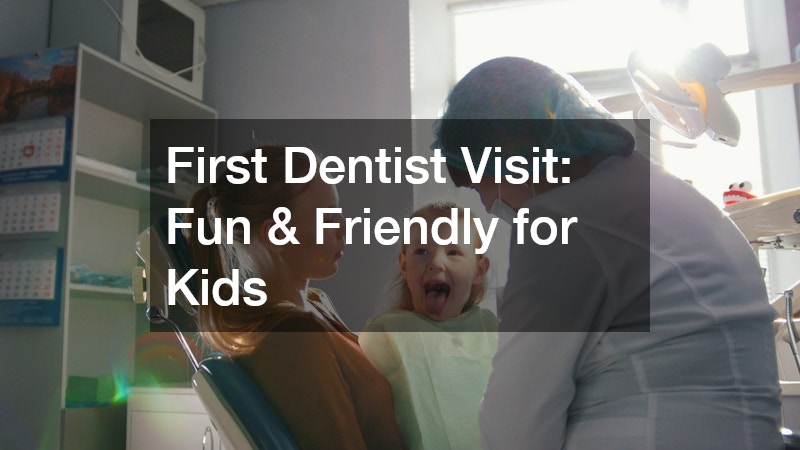
First Dentist Visit: Fun & Friendly for Kids
Introduction: Making Dental Care a Happy Memory from Day One
For many parents, the idea of taking their child to the dentist for the first time can be a mix of excitement and anxiety. Will they be scared? Will they cooperate? The truth is, your child’s first dental visit can be a fun, positive, and confidence-building experience—if you approach it the right way.
Pediatric dentists across the USA emphasize that introducing kids to dental care early is key to preventing cavities, building healthy oral habits, and avoiding dental anxiety later in life. The earlier children meet their dentist, the more normal and routine dental checkups will feel. Think of it like introducing your child to a new friend—they’ll feel safer if they’ve met them before any “serious” dental work is needed.
The first visit is often less about treatment and more about education—for both you and your child. It’s an opportunity to learn how to clean tiny teeth, when to introduce fluoride toothpaste, and what habits (like nighttime bottle use or frequent juice drinking) might lead to tooth decay. It also gives your child a chance to see that a childrens dentist office is full of bright colors, kind people, and fun distractions—not scary drills and needles.
This guide will help you prepare your child for their very first dental visit and ensure it’s a smile-filled milestone rather than a stressful chore.
1. Preparing Your Child for Their First Visit
Preparation is everything when it comes to making your child’s first dental appointment a success. Instead of springing the visit on them without notice, begin talking about it a week or two in advance. Use simple, positive language and avoid words like “pain,” “needle,” or “drill.” Instead, explain that the dentist is a friendly helper who counts and cleans teeth to keep them healthy and strong.
You can also read children’s books about going to the dentist or watch short cartoons that portray dental visits in a cheerful light. If your child likes role-play, set up a “pretend dentist” game at home—using a flashlight and toothbrush to count each other’s teeth. This type of play helps familiarize them with the process and removes the fear of the unknown.
Parents should also model a positive attitude. If you’ve had negative dental experiences, avoid sharing them. Kids can pick up on nervous energy, so it’s important to stay upbeat. Let them know exactly what will happen—like sitting in a special chair, meeting friendly staff, and getting a shiny new toothbrush afterward. The more prepared they are, the more confident they’ll feel walking in.
2. Choosing a Kid-Friendly Dental Clinic
Selecting the right dentist for your child can make all the difference between a positive experience and one filled with fear or resistance. Pediatric dentists undergo specialized training in child development, behavior management, and treating the unique dental needs of infants, toddlers, and young children. Their offices are designed to be welcoming and less intimidating, often featuring bright colors, playful décor, and smaller-sized dental chairs to help children feel more at ease.
When choosing a dentist, it’s important to look for one who not only has the proper qualifications but also demonstrates patience, empathy, and a genuine ability to connect with kids. A great pediatric dentist knows how to communicate in simple, reassuring language, explaining what they are doing in a way that makes sense to a child. They may even use fun names for tools—like calling the suction tube “Mr. Thirsty”—to help kids feel more relaxed.
It’s also worth considering practical factors, such as the location of the dental office, appointment availability, and how they handle emergencies. Some offices provide additional amenities like TVs on the ceiling, reward stickers, or a small toy at the end of the visit to create a sense of accomplishment.
Reading online reviews and asking other parents for recommendations can help you narrow down your options. You might also want to visit the office beforehand to see how the staff interacts with young patients and whether the environment feels friendly and comfortable. Remember, your child’s first impressions of the dentist can shape their attitude toward dental care for years to come, so choosing the right professional is essential for building a lifelong positive relationship with oral health.
3. Making the First Visit Fun and Relaxed
The first dental visit is often short, focusing more on comfort than treatment. Dentists may simply examine your child’s teeth, gums, and jaw to ensure everything is developing properly. They might also gently clean the teeth and apply fluoride for extra protection.
To make it fun, many pediatric dentists use “tell-show-do” techniques—first explaining what they’re going to do, then showing the tool, and finally doing it. For example, they might say, “We’re going to tickle your tooth,” show the brush, and then clean the tooth while the child giggles.
Distraction is also a helpful tool. Some clinics play cartoons on ceiling-mounted TVs or offer toys for children to hold during the exam. Parents can help by staying calm, offering gentle encouragement, and praising the child for their bravery. Avoid hovering too much, as it can make some children nervous; instead, let the dental team guide the interaction.
After the visit, celebrate the accomplishment. Whether it’s a trip to the park, a favorite snack, or simply lots of hugs and high-fives, the recognition reinforces that dental visits are positive experiences worth repeating.
4. Teaching Good Dental Habits Early
The first dental visit isn’t just about checking teeth—it’s also an opportunity to start building healthy habits. Dentists will often talk to both parents and children about proper brushing and flossing techniques. For younger kids, this means showing them how to hold the toothbrush and brush all sides of the teeth in gentle circles.
Parents should make toothbrushing a part of the daily routine, ideally twice a day. Use a pea-sized amount of fluoride toothpaste and a soft-bristled brush. For toddlers and preschoolers, brushing together can make it more fun. You can sing a two-minute song, use a colorful timer, or let them pick their own toothbrush with their favorite cartoon character.
Diet also plays a big role in oral health. Limit sugary snacks and drinks, and encourage water as the main beverage. Crunchy fruits and vegetables like apples and carrots can help clean teeth naturally while providing essential nutrients.
By turning dental care into a normal, positive part of daily life, you’re setting the foundation for lifelong oral health—and making future dental visits much easier.
5. Following Up and Building a Positive Routine
After the first visit, follow-up appointments should happen every six months, or as recommended by your dentist. These regular checkups allow the dentist to monitor growth, catch potential issues early, and reinforce good habits.
Between visits, continue to talk positively about dental care. Encourage your child to share what they remember about the dentist, and remind them how well they did last time. You might even keep a small calendar or chart where they can earn stickers for daily brushing and flossing.
It’s also worth noting that dental needs change as children grow. As permanent teeth begin to appear, the dentist may discuss sealants, orthodontic evaluations, or other preventive measures. Maintaining a positive relationship with the dentist from an early age ensures your child feels comfortable discussing these changes and receiving new treatments.
Conclusion
A child’s first dentist visit doesn’t have to be a source of stress or fear—it can be an exciting milestone in their growth and development. With the right preparation, it can be a fun, friendly, and educational experience that sets the tone for a lifetime of good oral health.
By introducing the idea of dental care early—through positive conversations, playful role-playing, and storybooks—you help your child approach the appointment with curiosity instead of anxiety. Choosing a pediatric dental clinic that feels warm, welcoming, and kid-friendly further ensures they feel safe and supported the moment they walk through the door.
During the visit, small touches like letting your child explore the dental chair, using gentle explanations, and rewarding them for cooperation can turn the experience into a memorable adventure. The key is to make dental visits a normal and celebrated part of their health routine rather than something to fear.
Equally important is reinforcing healthy dental habits at home—daily brushing and flossing, limiting sugary snacks, and teaching the value of caring for their teeth. When these practices are consistently encouraged, the dentist’s office becomes a place of confirmation and celebration, not correction or fear.
Remember, regular checkups are not just about spotting cavities—they’re an opportunity for your child to learn more about their oral health, develop trust in their dentist, and gain confidence in caring for their smile.
Start early, stay positive, and keep the experience light and encouraging. Every visit is a chance to build your child’s self-assurance and shape their long-term relationship with dental care. Over time, these efforts add up to more than just healthy teeth—they create a confident child who understands that their smile is something worth protecting, one visit at a time.



